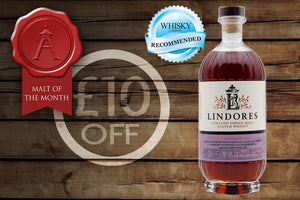
Glen Mhor
Glen Mhor is one of a trio of lost distilleries that used to call the town of Inverness its home, with its name meaning the Great Glen. In recent decades...
Glen Mhor
Glen Mhor is one of a trio of lost distilleries that used to call the town of Inverness its home, with its name meaning the Great Glen. In recent decades there has been an explosion in growth across the Highland capital which was reflected when it was granted city status in 2000 by the UK government. This was one of the reasons for the decline of whisky within its confines, as all three distilleries were situated on space ripe for development.
The pressure to build new accommodation and retail space meant that Glen Albyn and Glen Mhor were sacrificed, whilst Millburn still stands as a converted hotel and restaurant. The downturn of the 1980’s was a key feature as whisky demand slumped and overproduction became an issue. The corporate owners of the time were forced to revaluate their existing distilleries with numerous factors being decisive. Land value was a factor, as we’ve seen along with the cost of modernising a facility alongside a single malt presence and accessibility to support increased production. For Glen Mhor these dynamics were all stacked against it and DCL (a forerunner to Diageo) decided to close the distillery in 1983. The buildings were demolished in 1986 and the site now is occupied by a retail park.
However, Glen Mhor lives on with a legacy that started with its foundation in 1892 by MacKinlay and Brine, with the former being an established whisky blender based in Edinburgh. The history books show us that John Birnie (also the provost of Inverness) was already well versed in the potential to make whisky at this specific location. His previous involvement with the Glen Albyn distillery in Inverness came to an end in 1890 after a dispute regarding ownership. Undeterred he helped establish Glen Mhor, literally a stone’s throw away from his previous distillery. These two distilleries would be entangled forever when the MacKinlay Company took ownership of Glen Albyn in 1920.
Little internally changed at Glen Mhor during its lifespan, which was just under a hundred years of existence. The distillery was the first in Scotland to utilise the Saladin Box that brought automation to the labour intensive process of floor malting. Shortly afterwards, these box devices became widely used in many distilleries with the original device at Glen Mhor remaining in operation until 1980. The distillery at least experienced a consistent period of ownership with descendants of the original partnership deciding to sell both distilleries to DCL in 1972 however a decade later the writing was on the wall for the distillery.
There was a lack of investment at Glen Mhor, or at least the vision to adapt and reach new markets mainly due to the smallness of the family firm who owned it for much of its lifespan. The distillery still only utilised 2 stills, both adapted to steam heating in 1963, whilst many others in the industry had grown in size since the end of the Second World War, Glen Mhor remained static. It did not have a notable single malt presence in the market, although the owners consistently bottled it at various ages. The most widely available bottling was a series of releases from independent bottler Gordon & MacPhail. Other independents have released casks from Glen Mhor including the most recent in 2017 by Cadenheads and prior to this a 50-year-old from Signatory. The nearest that Glen Mhor came to an official bottling after being sold were two releases as part of the Rare Malts series, with a 22-year-old and a 28-year-old representing the distillery.
Surprisingly for such a small distillery with a modest output, Glen Mhor was the most highly regarded of the Inverness trio. The fact that it was a vital component in the Mackinlay’s Rare Old Highland Malt was underlined in 2012, when a 1907 shipment of whisky bottles was found underneath Ernest Shackleton’s South Antarctic base, buried in the ice. Richard Paterson, the Whyte and Mackay master blender, was given the opportunity to assess a trio of bottles, which then prompted a recreation of the whisky for retail. Using today’s scientific methods, they identified Glen Mhor as the major contributor and the sourced a trio of casks from the distillery to give the modern day version that missing vital ingredient.
Today, Glen Mhor is no longer with us, but its legacy lives on whether via the Rare Old recreations, or if you’re fortunate to experience a whisky from an original bottling.


